Counterfeit Detection: 1954-D Quarter Mint Error
Posted on 6/11/2019
In 1954, the Denver Mint struck over 42 million Washington quarters. Given this high mintage, in lower grade, the coins are usually not worth much more than the intrinsic value of the silver they contain.
NGC recently received what appears to be a double struck 1954-D Quarter for grading. While it might only have been worth $10-$20 without the second strike, with it the coin could have been worth hundreds of dollars. Unfortunately for the submitter, the coin itself was genuine, but the second strike was not.
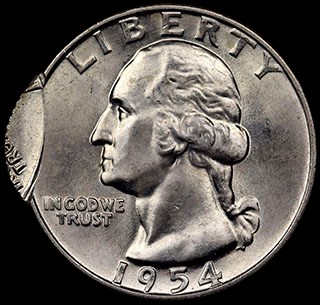 |
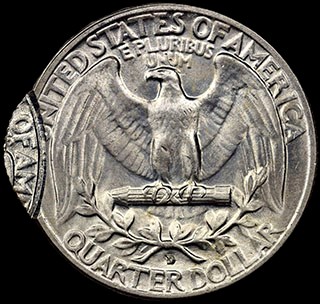 |
| 1954-D Washington Quarter with a counterfeit second strike Click images to enlarge. |
|
Many casual collectors wouldn’t even realize that counterfeiters are faking mint errors, so it is likely that the submitter was quite surprised to see this come back as “Not Genuine Second Strike.” But, if you take a closer look at the coin, the texture of the off-center strike is very different than that of the host coin.
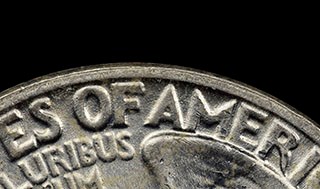 |
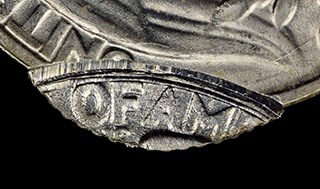 |
| Close-up of genuine strike (left) versus counterfeit second strike (right) Click images to enlarge. |
|
In the photos above, look at the vast difference between the quality of the strikes. On the host coin, the letters are sharp and defined, and the fields are relatively smooth and show the metal flow from the strike radiating outward as expected. The counterfeit second strike, on the other hand, has letters of the motto that fade into the fields and are surrounded by an odd porosity. This porousness is likely caused by a combination of poor-quality transfer dies and insufficient striking pressure. This also means that the metal flow lines are almost non-existent.
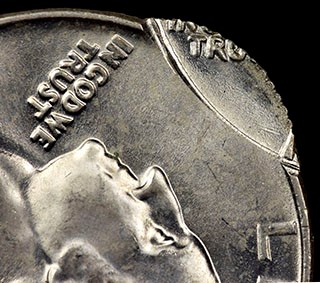 |
| Close-up of counterfeit second strike Click image to enlarge. |
The obverse side of the counterfeit strike looks slightly more convincing than the reverse. The fields, while smoother, still have some porosity that is not seen on the original genuine strike. Additionally, note that the shape of the foot of the “R” in “TRUST” is pointier on the second strike than the original one. This would not be possible as both strikes should have come from the same pair of dies.
Mint errors are a very interesting area of numismatics, and collecting them can be very rewarding. However, as counterfeiting technology has become steadily more advanced, NGC has seen more and more counterfeits like this one. It is very important to remain vigilant when purchasing mint errors, especially if you are not familiar with them and their authentication. If you are concerned about the possibility of accidentally buying a counterfeit, purchase a coin in an NGC holder, as they are guaranteed to be authentic.
Did you know? NGC has created a comprehensive Counterfeit Detection resource to help collectors and dealers identify counterfeit and altered coins. Visit NGCcoin.com/counterfeit.
Stay Informed
Want news like this delivered to your inbox once a month? Subscribe to the free NGC eNewsletter today!
